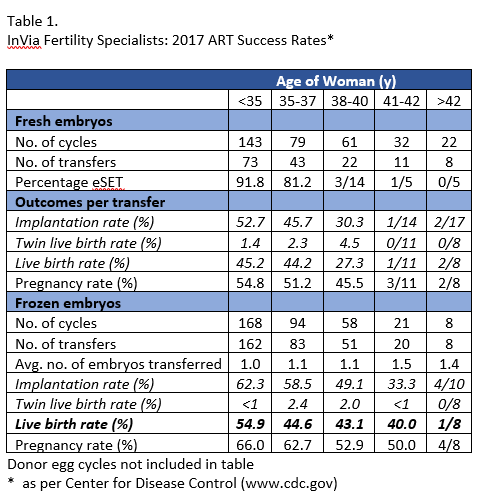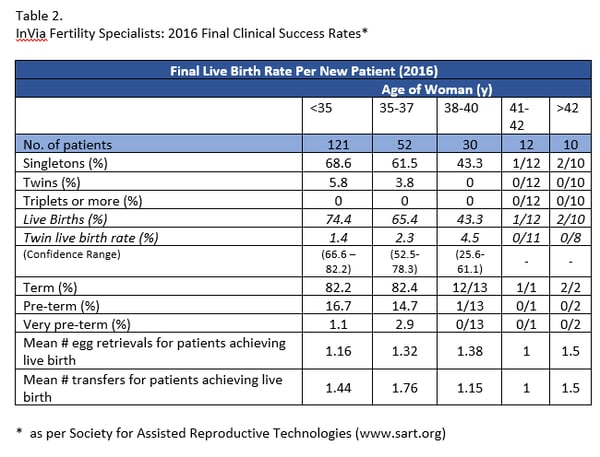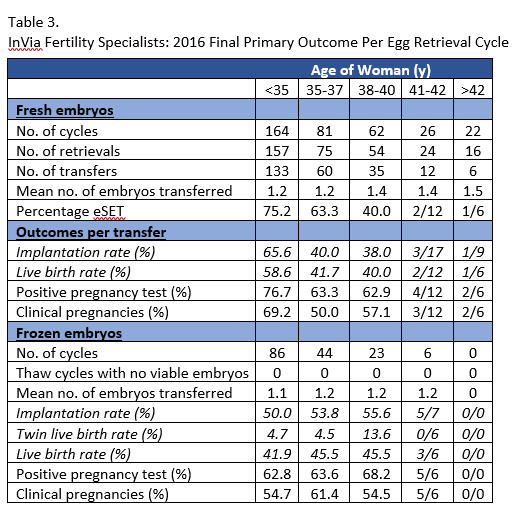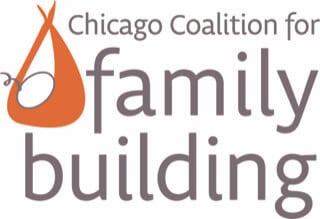We are experiencing a very high volume of calls and messages and ask for your patience. We will answer your portal messages within 48 hours.
We are experiencing a very high volume of calls and messages and ask for your patience. We will answer your portal messages within 48 hours.
.jpg)
.jpg?width=300&name=My%20Post%20(13).jpg) At InVia Fertility Specialists (InVia) we have been providing fertility services to our patients for the past 16 years. Our in vitro fertilization (IVF) program has been very successful and has been consistently reporting excellent success rates.
At InVia Fertility Specialists (InVia) we have been providing fertility services to our patients for the past 16 years. Our in vitro fertilization (IVF) program has been very successful and has been consistently reporting excellent success rates.
One of our goals has been to maintain high pregnancy rates and at the same time minimize the incidence of twin pregnancy. This is because of the increased risk of complications with twins. According to the Society for Assisted Reproductive Technologies (SART); compared to singletons, the risk of infant death is more than 4-fold higher with twins and 13-fold higher with triplets.
An easy way of minimizing twin pregnancy rates is to do IVF and transfer a single embryo. Theoretically, elective single embryo transfer (eSET) will reduce the incidence of twins down to about 2%. (an occasional embryo will split into two). Historically, it has been very difficult to implement such a policy due to the fact that a lot of our patients want to have twins! Patients were resistant to accepting eSET and for many years, we routinely transferred two embryos even in young patients. It has now been conclusively shown that the cumulative pregnancy rate with two eSET’s is HIGHER than a double embryo transfer. However, the incidence of twin pregnancy with double embryo transfer is almost 40%!
It is with great pride and joy that I would like to present the latest IVF success rates at InVia. In 2017, we did a total of 923 cycles. In patients less than 35 years of age, we did eSET in 91.8% of fresh cycles and 100% of frozen embryo transfer cycles (FET)! The multiple pregnancy rate was 1.4% per fresh transfer cycle (143 cycles) with fresh embryos and 0% for FET (168 cycles). The national twin pregnancy rate in this group as per the Center for Disease Control (CDC) was around 10% in 2015. For 2016 and 2017, we have not had a single IVF triplet pregnancy! The details of our 2017 success rates as reported by the CDC are summarized in Table 1. Another agency that reports IVF success rates is SART. They report success rates in a manner that is different than the CDC. SART reports pregnancy rates “per new patient”. This is the pregnancy rate that includes fresh and frozen embryo transfers from a single retrieval. According to SART data, we did 705 cycles in 2016. 74.4% of patients under age 35 years got pregnant with their first cycle at InVia! This is with a 1.4% twin pregnancy rate!!! (See Table 2.). The mean number of egg retrievals and embryo transfers for patients to achieve pregnancy at InVia are also summarized in Table 2.
Another agency that reports IVF success rates is SART. They report success rates in a manner that is different than the CDC. SART reports pregnancy rates “per new patient”. This is the pregnancy rate that includes fresh and frozen embryo transfers from a single retrieval. According to SART data, we did 705 cycles in 2016. 74.4% of patients under age 35 years got pregnant with their first cycle at InVia! This is with a 1.4% twin pregnancy rate!!! (See Table 2.). The mean number of egg retrievals and embryo transfers for patients to achieve pregnancy at InVia are also summarized in Table 2.

The 2016 final primary outcomes per egg retrieval cycle are summarized in Table 3. Once again, we had excellent pregnancy rates and a very low multiple pregnancy rate.

In conclusion, I am happy to report to you the latest success rates of our IVF program. Excellent pregnancy rates, a very high incidence of eSET, hardly any twins, and no triplets. In fact, I think we are currently getting more twins from clomiphene citrate (Clomid) and timed intrauterine insemination (IUI) cycles than with IVF!

Entire Website © 2003 - 2020
Karande and Associates d/b/a InVia
Fertility Specialists
